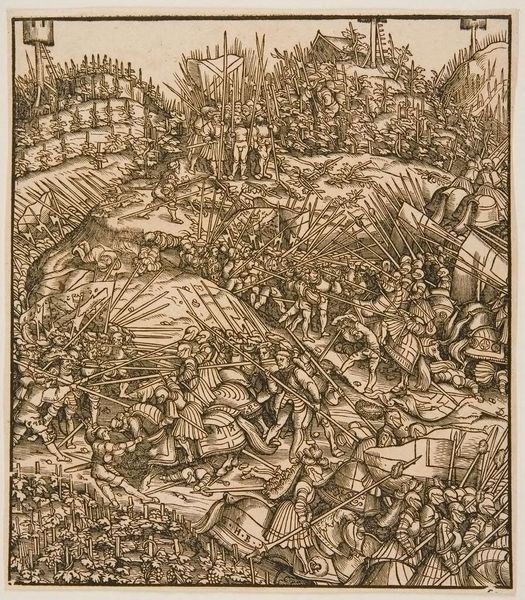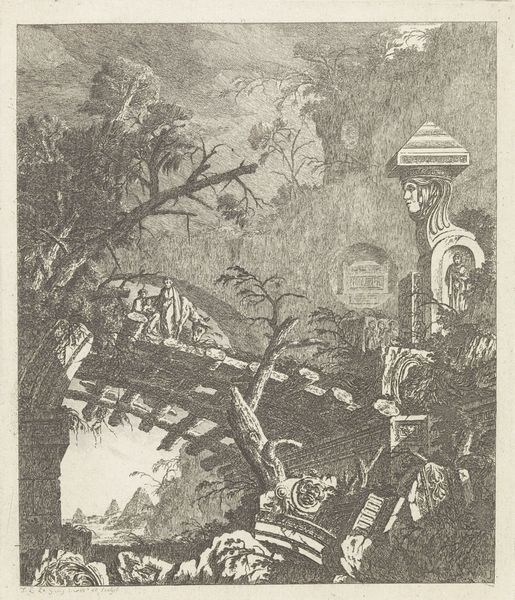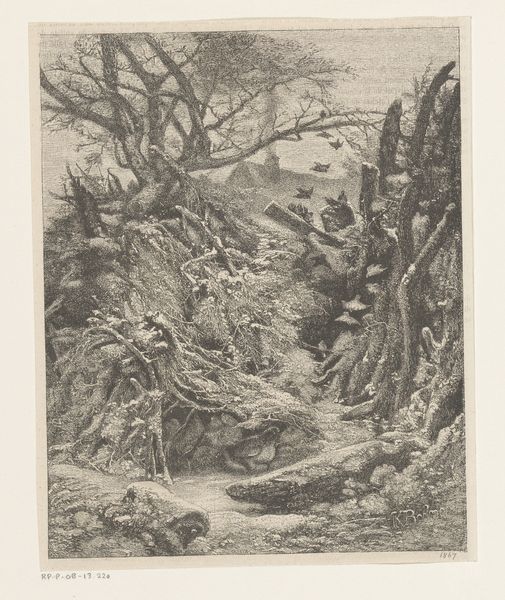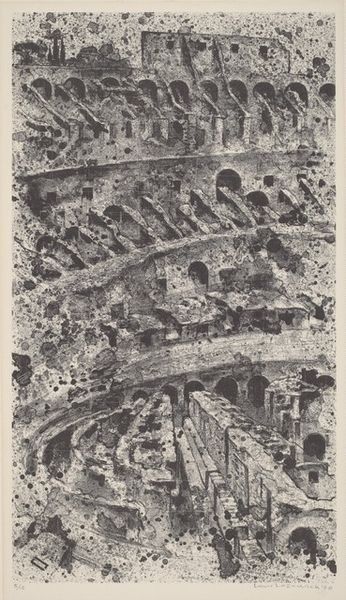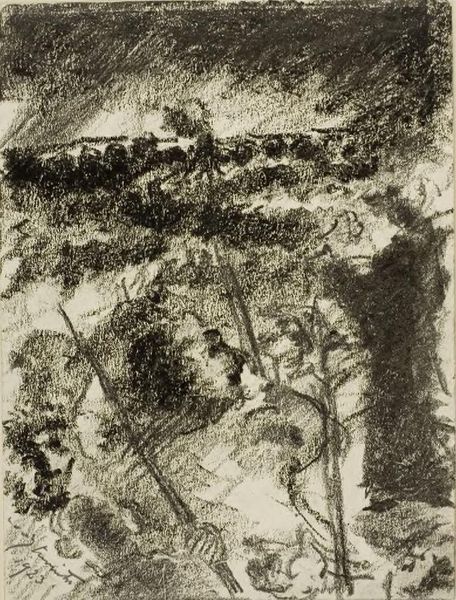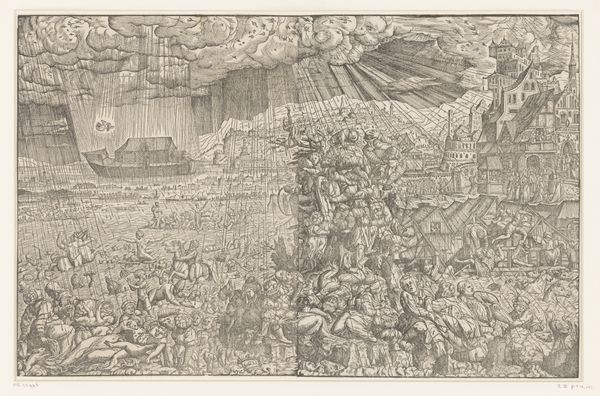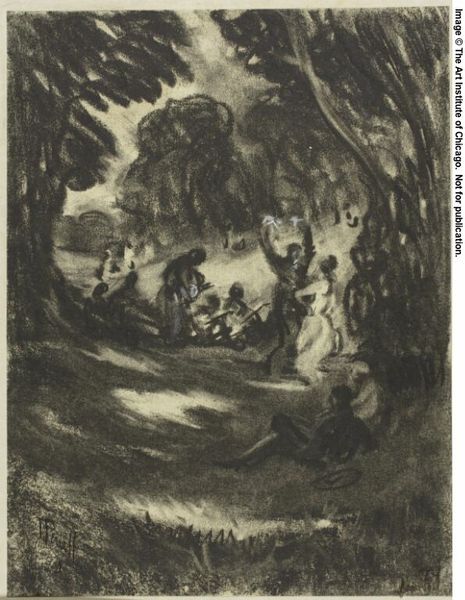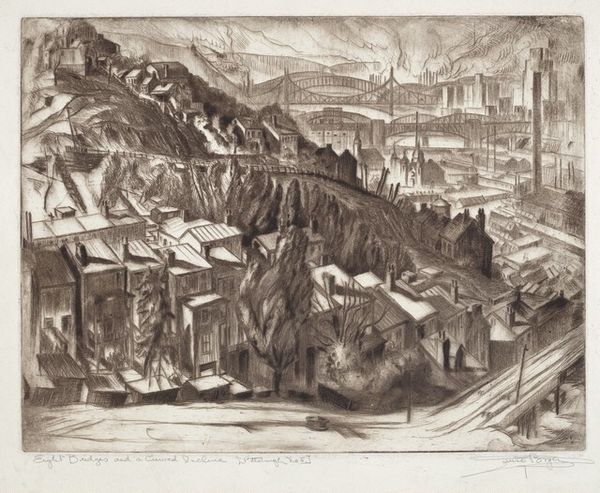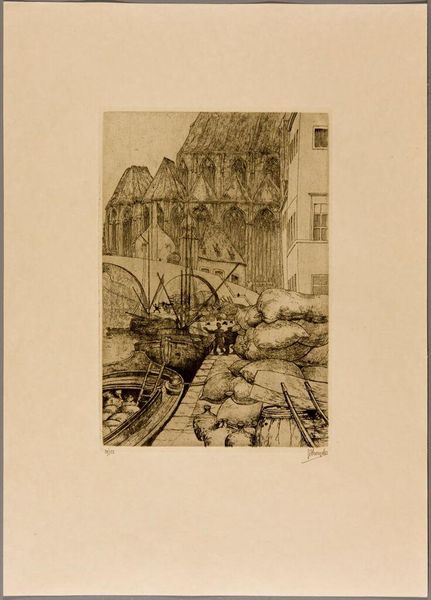
drawing, print, ink, engraving
#
drawing
#
ink drawing
#
pen drawing
# print
#
landscape
#
ink
#
line
#
pen work
#
engraving
Dimensions: image: 34.5 x 25.3 cm (13 9/16 x 9 15/16 in.) sheet: 47.5 x 23.9 cm (18 11/16 x 9 7/16 in.)
Copyright: National Gallery of Art: CC0 1.0
Editor: So, this print is titled *Kleine Glockenblume*, or *Small Bellflowers* by Wilhelm Heise. It's an ink drawing and engraving of a landscape. I am struck by the density of the composition; there is such a contrast between the dark foreground and the brighter waterfall in the background. How do you interpret this work, seeing all its layers and details? Curator: This piece is a powerful statement, wouldn't you agree? Consider the period and its artistic responses to rapid industrialization. Heise, working with such detailed engraving, seems to present a tension between nature and the constructed world. The "small bellflowers," in their delicate detail, dominate the foreground, while the built environment of the water mill is further away. Editor: That's interesting! It almost feels like a commentary. Do you see the artist advocating for one over the other? Curator: Precisely! The visual emphasis suggests a desire to preserve and foreground the natural world amidst encroaching development. Heise's choice of medium – printmaking – also allows for wider distribution. Doesn’t that strike you as aligned with early environmentalist efforts, a kind of visual activism to make a statement for that time? Editor: I never considered the printmaking as a way of distributing his message, as a means of advocacy and activism. Curator: Exactly. And where did he show or share his art? The context in which art is displayed contributes to our understanding of that time. So what are your final reflections? Editor: This piece now seems less like a simple landscape and more like a powerful commentary on the environment and industry, thanks to his visual emphasis on nature and his artmaking method for wider outreach. Curator: Indeed. Understanding art is also about understanding how art can become action.
Comments
No comments
Be the first to comment and join the conversation on the ultimate creative platform.
